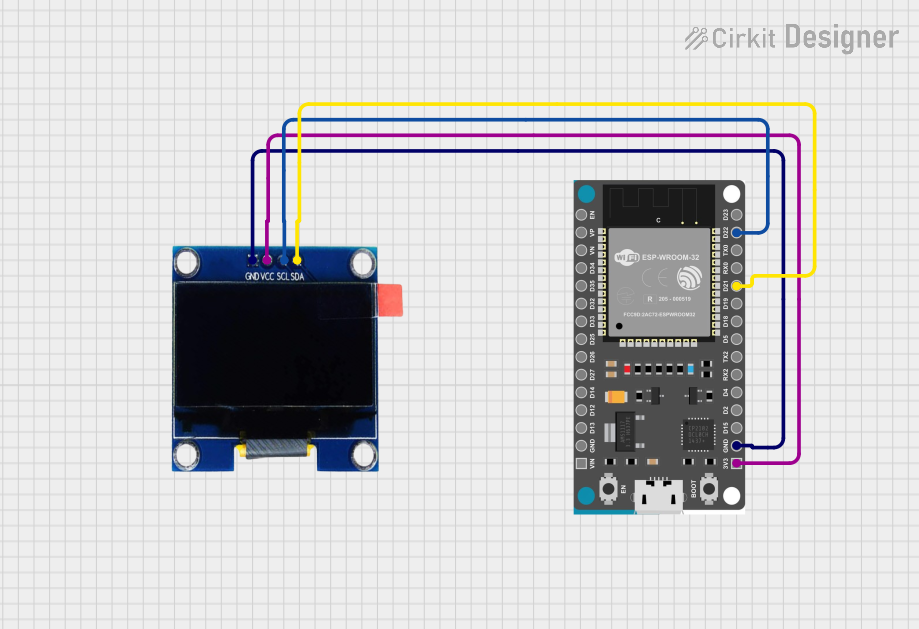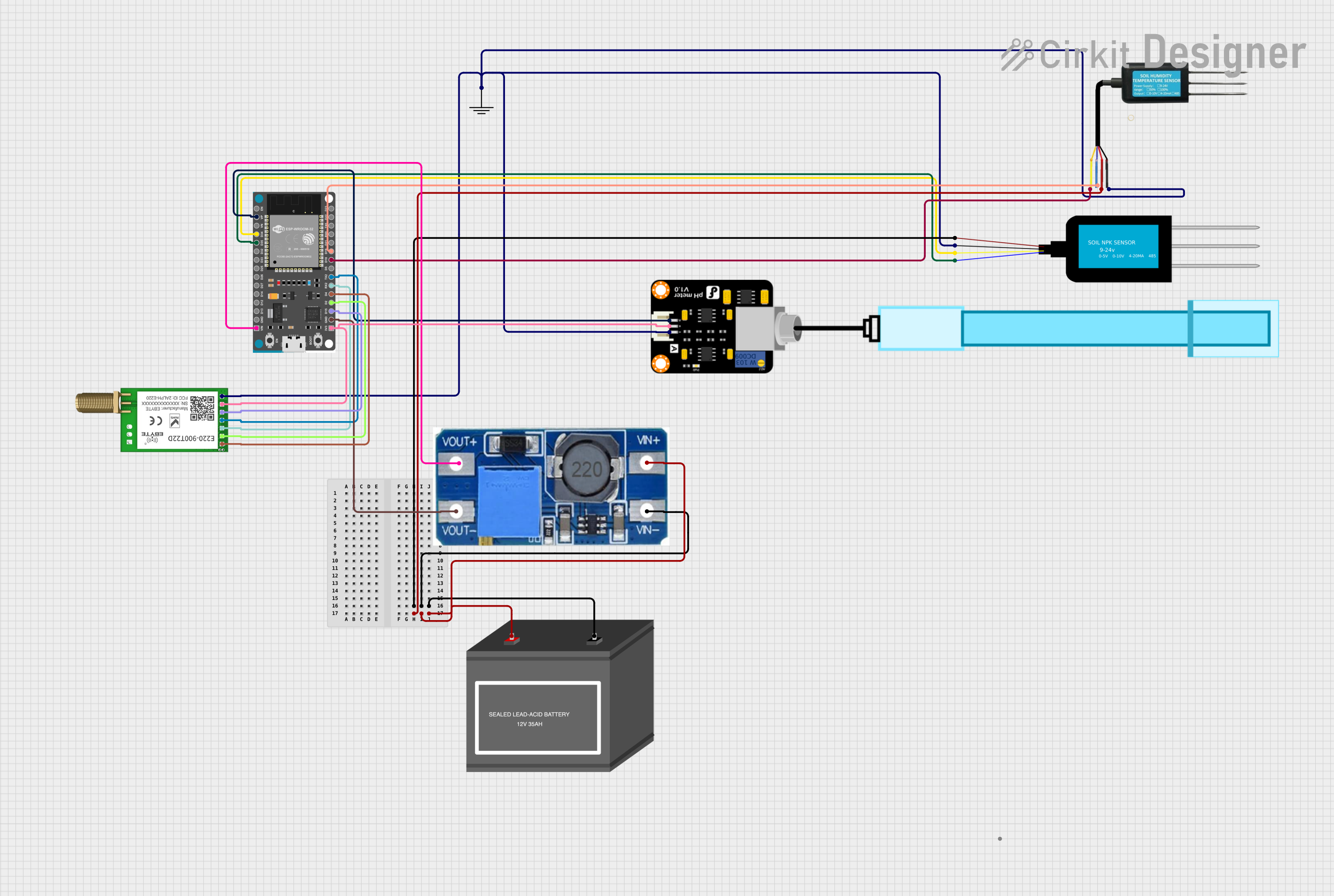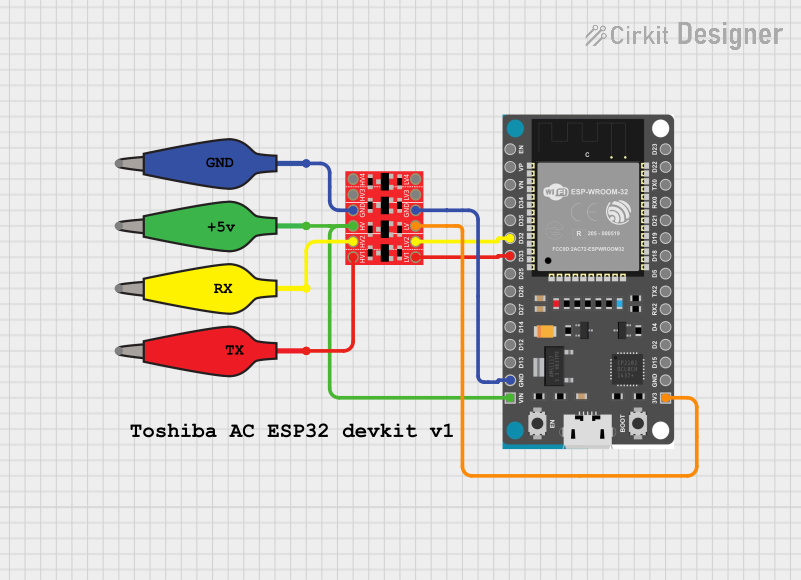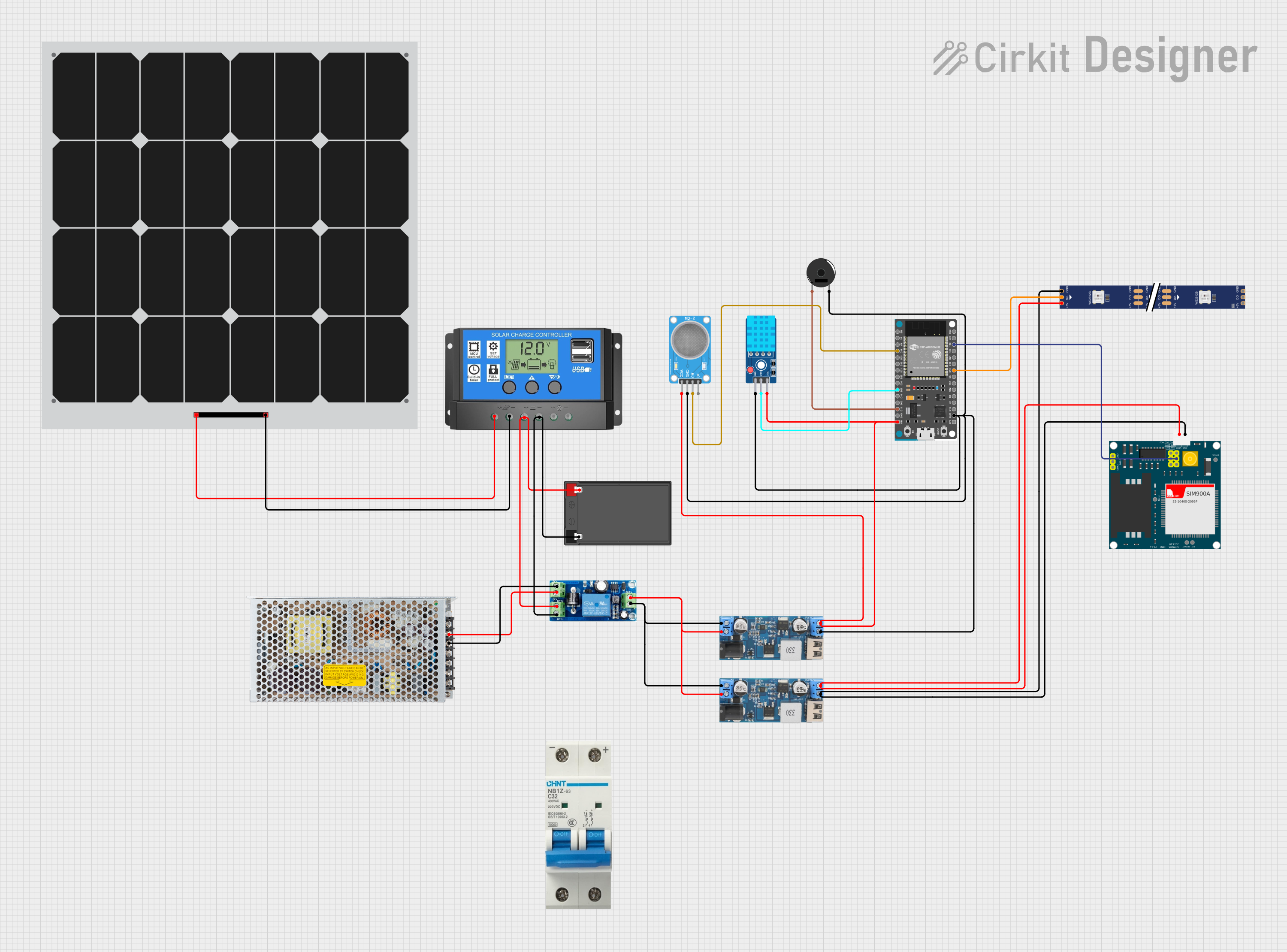
How to Use ESP32 DevKitC V4: Examples, Pinouts, and Specs

 Design with ESP32 DevKitC V4 in Cirkit Designer
Design with ESP32 DevKitC V4 in Cirkit DesignerIntroduction
The ESP32 DevKitC V4 is a compact and versatile development board designed by Espressif. It features the ESP32-WROOM-32U module, which integrates a powerful dual-core processor, Wi-Fi, and Bluetooth capabilities. This board is ideal for Internet of Things (IoT) applications, smart devices, and rapid prototyping. Its small form factor and rich set of GPIO pins make it suitable for a wide range of projects, from home automation to industrial control systems.
Explore Projects Built with ESP32 DevKitC V4

 Open Project in Cirkit Designer
Open Project in Cirkit Designer
 Open Project in Cirkit Designer
Open Project in Cirkit Designer
 Open Project in Cirkit Designer
Open Project in Cirkit Designer
 Open Project in Cirkit Designer
Open Project in Cirkit DesignerExplore Projects Built with ESP32 DevKitC V4

 Open Project in Cirkit Designer
Open Project in Cirkit Designer
 Open Project in Cirkit Designer
Open Project in Cirkit Designer
 Open Project in Cirkit Designer
Open Project in Cirkit Designer
 Open Project in Cirkit Designer
Open Project in Cirkit DesignerCommon Applications and Use Cases
- IoT devices and smart home systems
- Wireless sensor networks
- Bluetooth-enabled applications
- Prototyping and development of embedded systems
- Robotics and automation projects
- Data logging and remote monitoring
Technical Specifications
Key Technical Details
| Parameter | Value |
|---|---|
| Microcontroller | ESP32 (dual-core Xtensa LX6 processor) |
| Clock Speed | Up to 240 MHz |
| Flash Memory | 4 MB (integrated in ESP32-WROOM-32U) |
| RAM | 520 KB SRAM |
| Wireless Connectivity | Wi-Fi 802.11 b/g/n, Bluetooth v4.2 BR/EDR |
| Operating Voltage | 3.3V |
| Input Voltage (via USB) | 5V |
| GPIO Pins | 30 (multipurpose, including ADC, PWM, etc.) |
| Communication Interfaces | UART, SPI, I2C, I2S, CAN, PWM |
| Dimensions | 54 mm x 27 mm |
Pin Configuration and Descriptions
The ESP32 DevKitC V4 has a total of 30 GPIO pins, which are multiplexed for various functions. Below is the pinout description:
| Pin Number | Pin Name | Functionality |
|---|---|---|
| 1 | EN | Reset the chip (active high) |
| 2 | IO0 | GPIO0, used for boot mode selection |
| 3 | IO1 | GPIO1, UART TXD0 |
| 4 | IO2 | GPIO2, ADC, PWM, Touch Sensor |
| 5 | IO3 | GPIO3, UART RXD0 |
| 6 | IO4 | GPIO4, ADC, PWM, Touch Sensor |
| 7 | IO5 | GPIO5, ADC, PWM, Touch Sensor |
| 8 | IO12 | GPIO12, ADC, PWM, Touch Sensor |
| 9 | IO13 | GPIO13, ADC, PWM, Touch Sensor |
| 10 | IO14 | GPIO14, ADC, PWM, Touch Sensor |
| 11 | IO15 | GPIO15, ADC, PWM, Touch Sensor |
| 12 | IO16 | GPIO16, UART RXD2 |
| 13 | IO17 | GPIO17, UART TXD2 |
| 14 | IO18 | GPIO18, SPI CLK |
| 15 | IO19 | GPIO19, SPI MISO |
| 16 | IO21 | GPIO21, I2C SDA |
| 17 | IO22 | GPIO22, I2C SCL |
| 18 | IO23 | GPIO23, SPI MOSI |
| 19 | IO25 | GPIO25, ADC, DAC |
| 20 | IO26 | GPIO26, ADC, DAC |
| 21 | IO27 | GPIO27, ADC, PWM |
| 22 | IO32 | GPIO32, ADC, Touch Sensor |
| 23 | IO33 | GPIO33, ADC, Touch Sensor |
| 24 | IO34 | GPIO34, ADC (input only) |
| 25 | IO35 | GPIO35, ADC (input only) |
| 26 | IO36 | GPIO36, ADC (input only) |
| 27 | IO39 | GPIO39, ADC (input only) |
Usage Instructions
How to Use the ESP32 DevKitC V4 in a Circuit
Powering the Board:
- The board can be powered via the micro-USB port (5V input).
- Alternatively, you can supply 3.3V directly to the 3V3 pin.
Programming the Board:
- The ESP32 DevKitC V4 can be programmed using the Arduino IDE, Espressif's ESP-IDF, or other compatible environments.
- Install the necessary drivers and libraries for the ESP32 in your development environment.
Connecting Peripherals:
- Use the GPIO pins to connect sensors, actuators, or other peripherals.
- Ensure that the voltage levels of connected devices are compatible with the 3.3V logic of the ESP32.
Uploading Code:
- Connect the board to your computer via USB.
- Select the appropriate board and port in your IDE.
- Write or load your code and upload it to the ESP32.
Important Considerations and Best Practices
- Voltage Levels: The GPIO pins operate at 3.3V. Avoid applying 5V directly to the pins to prevent damage.
- Boot Mode: To enter bootloader mode, hold the BOOT button while pressing the EN (reset) button.
- Power Supply: Ensure a stable power supply to avoid unexpected resets or malfunctions.
- Wi-Fi and Bluetooth: Avoid placing the board in metal enclosures, as this can interfere with wireless communication.
Example Code for Arduino IDE
Below is an example of how to blink an LED connected to GPIO2:
// Define the GPIO pin for the LED
const int ledPin = 2;
void setup() {
// Set the LED pin as an output
pinMode(ledPin, OUTPUT);
}
void loop() {
// Turn the LED on
digitalWrite(ledPin, HIGH);
delay(1000); // Wait for 1 second
// Turn the LED off
digitalWrite(ledPin, LOW);
delay(1000); // Wait for 1 second
}
Troubleshooting and FAQs
Common Issues and Solutions
The board is not detected by the computer:
- Ensure the USB cable is functional and supports data transfer.
- Install the correct USB-to-serial driver for the ESP32.
Code upload fails:
- Check that the correct board and port are selected in the IDE.
- Hold the BOOT button while uploading the code to enter bootloader mode.
Wi-Fi connection issues:
- Verify the SSID and password in your code.
- Ensure the router is within range and supports 2.4 GHz Wi-Fi.
GPIO pin not working as expected:
- Check if the pin is being used for another function (e.g., ADC, PWM).
- Avoid using pins reserved for internal functions (e.g., GPIO6-GPIO11 for flash memory).
FAQs
Q: Can I power the ESP32 DevKitC V4 with a battery?
A: Yes, you can use a 3.7V LiPo battery with a voltage regulator to supply 3.3V to the 3V3 pin.Q: What is the maximum current output of the GPIO pins?
A: Each GPIO pin can source or sink up to 12 mA safely.Q: Can I use the ESP32 DevKitC V4 with MicroPython?
A: Yes, the ESP32 supports MicroPython. You can flash the MicroPython firmware to the board and use it for development.Q: How do I reset the board?
A: Press the EN button to reset the board.